For many of us, birds are an enduringly popular connection with the natural world. With the 10th annual Birdlife Australia Aussie Bird Count upon us it is a good opportunity to share some of the birds – and their homes – in our collections.
Bird nests can look remarkably precarious, often constructed in seemingly the most unexpected and inhospitable places such as the building ledge that houses the Peregrine falcon family in Melbourne. From the site, an enthusiastically followed live-stream observed the the egg to fledge stage of the falcons and their young – sadly this year the eggs did not hatch. The skills and dexterity of birds in creating their nests, although some site selections may look risky – is evident here in in this small sample.

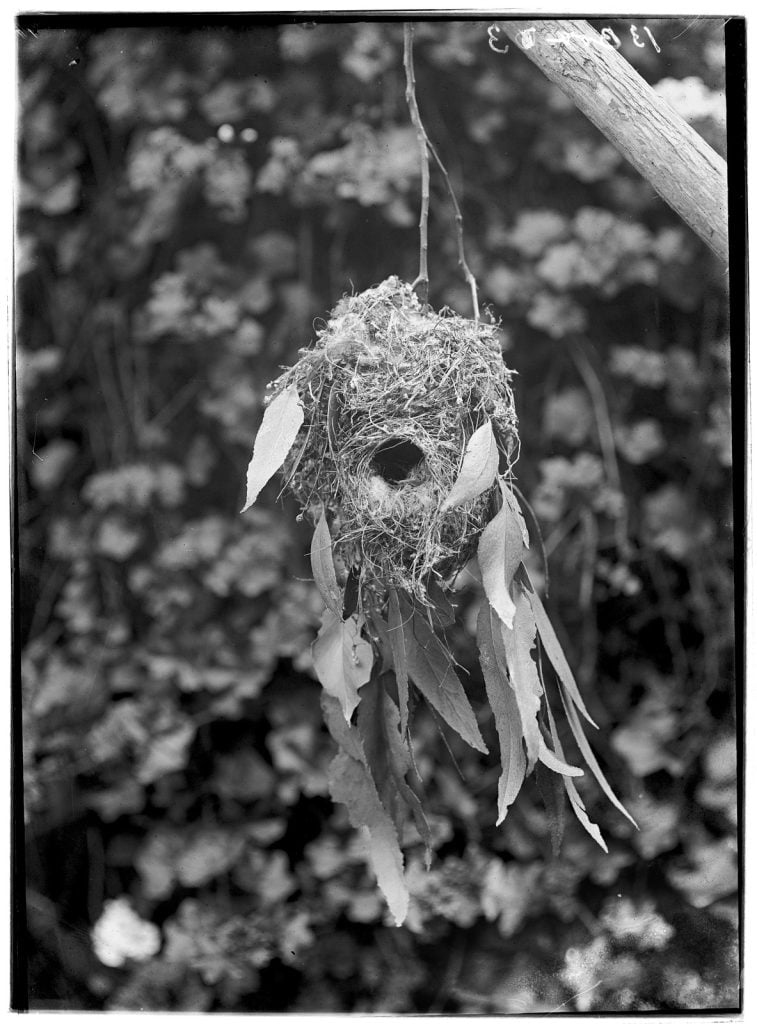
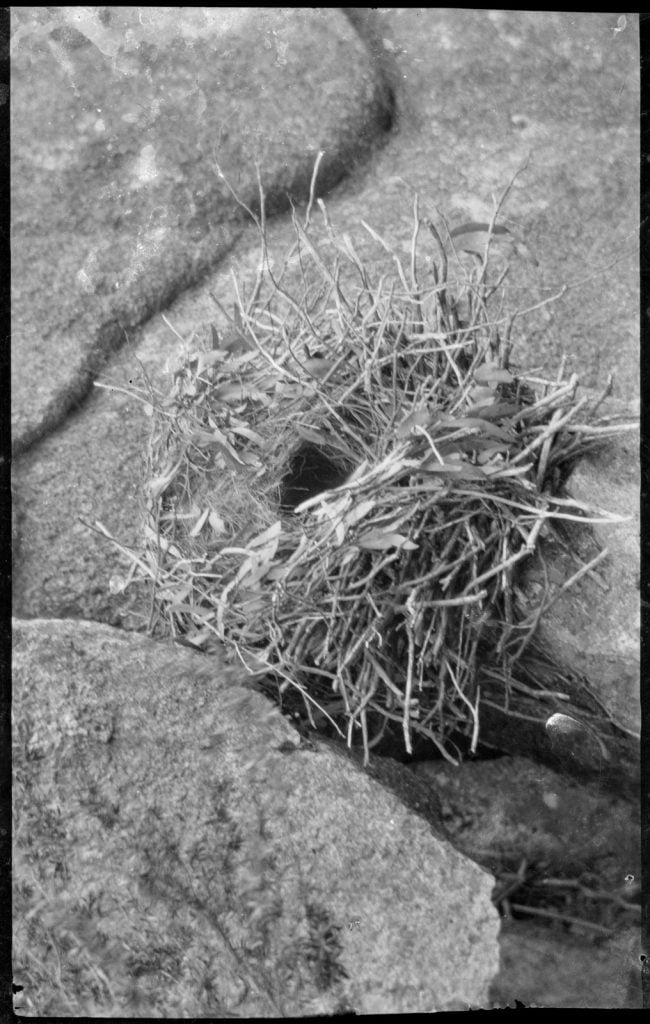
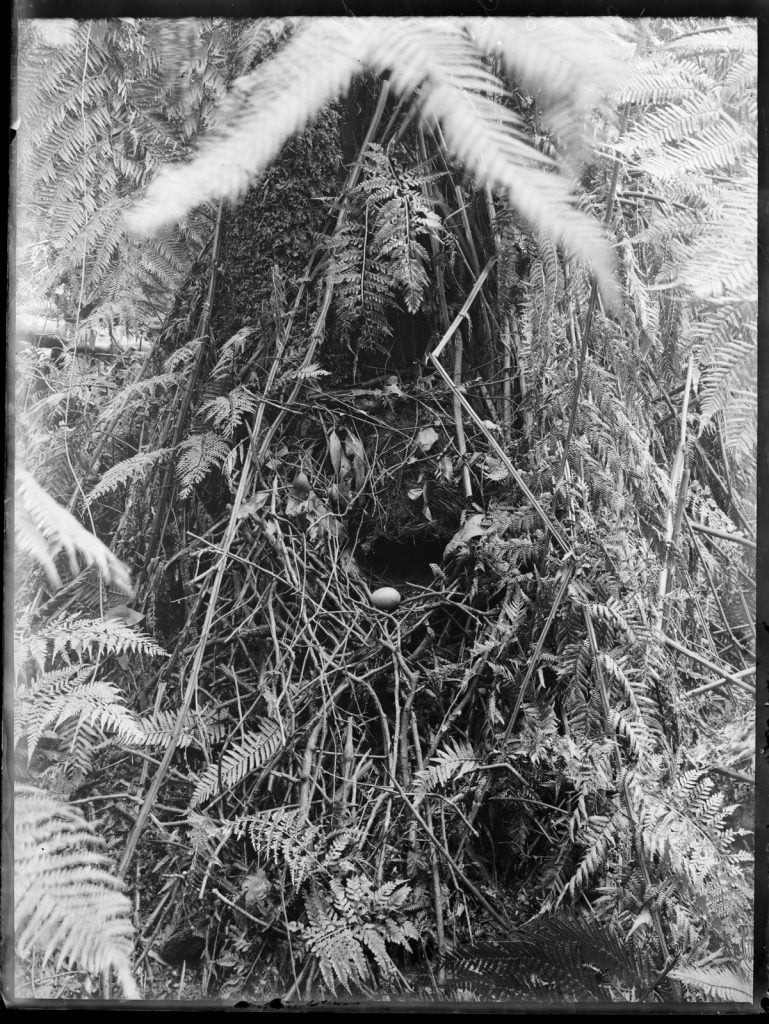
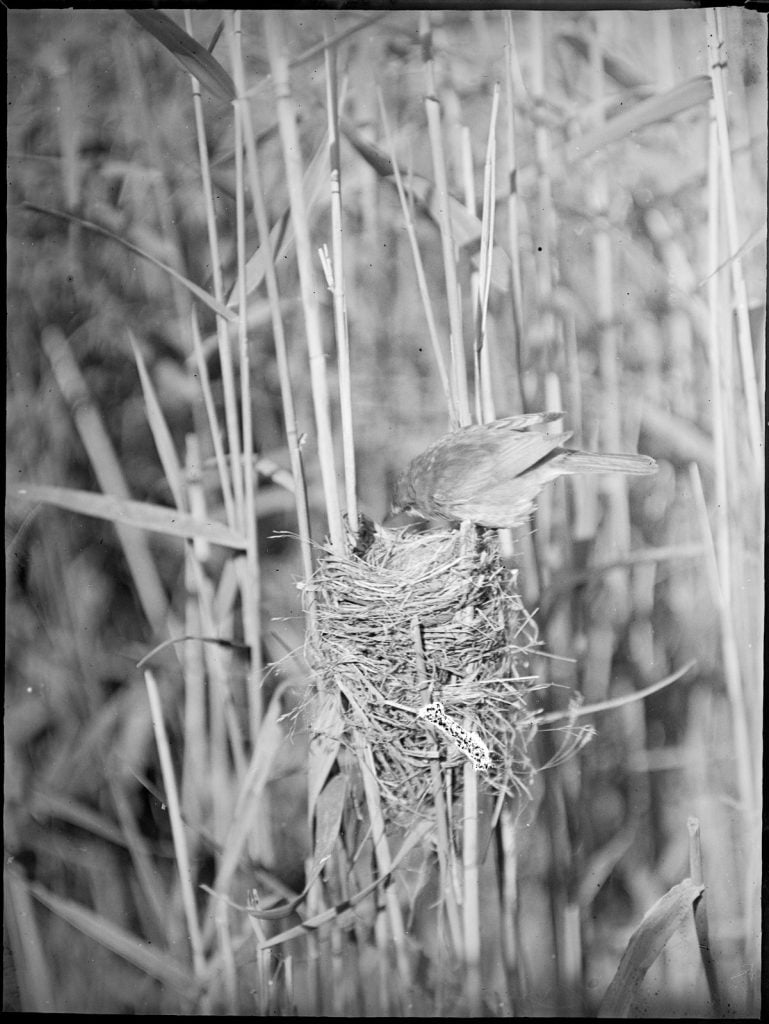
Mattingley, Arthur, Close views of nests with eggs birds unidentified, H2016.58/27;
Manfield, Alice, [Bird’s nest among rocks, Mt. Buffalo, Vic.], H2003.97/117;
Mattingley, Arthur, Lyre Bird [eggs & nest only], H84.488/124;
Mattingley, Arthur, Small bird at its nest among the reeds, H84.488/17
In 1801 John Lewin arrived in Sydney and set to work as an unofficial natural history artist. His Birds of New South Wales, with their natural history, published in 1813, includes illustration and description of 18 birds and was the first illustrated book to be published in New South Wales. An earlier edition, Birds of New Holland, was published in London in 1808.


Sydney : G. Howe, 1813. Courtesy National Library of Australia
The precarious existence for many species is illustrated by this bird – the Collared plains wanderer (Pedionomus torquatus). Critically endangered, and a creature of the similarly endangered grasslands, the few left are the focus of a recovery team project by Zoos Victoria.
Elizabeth Gould was responsible for over 600 of the drawings in John Gould’s Birds of Australia. The work below is a preliminary for the later one that appeared in Birds of Australia. (Vol 5, 80)
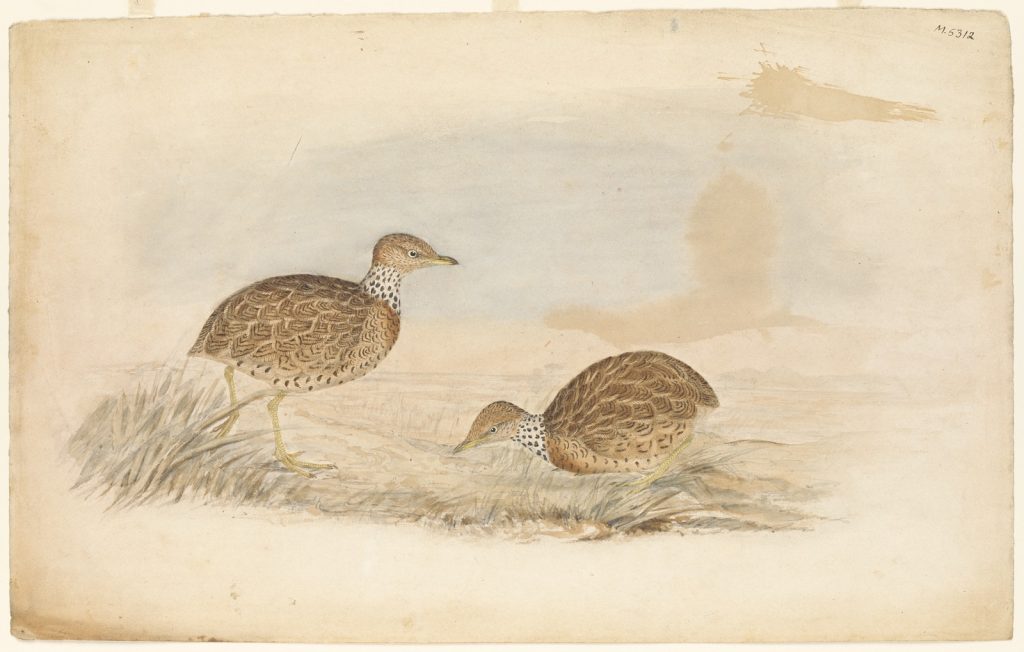
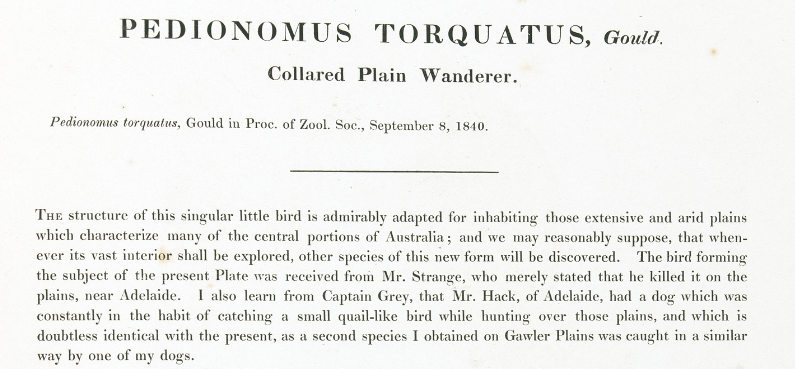
The Birds of Australia: in seven volumes, 1837-1840, vol 5, plate 80
The Australasian Ornithologists Union, formed in 1901, later becoming Birdlife Australia, supported the study and conservation of bird species in Australia.

Annual meeting of Aust. Ornithologists Union, mutton bird dinner, Melbourne, 1902 (Nov.) Vic., H91.280/3/19
Their journal Emu, sought to inform and record the science of ornithology and the cause of bird protection. Their first issue issued a call for citizen science involvement – “the larger number of observers who prove that they at work by recording what they see, and publishing their notes, the more efficient will be the official journal of the Australasian Ornithologists Union be.”
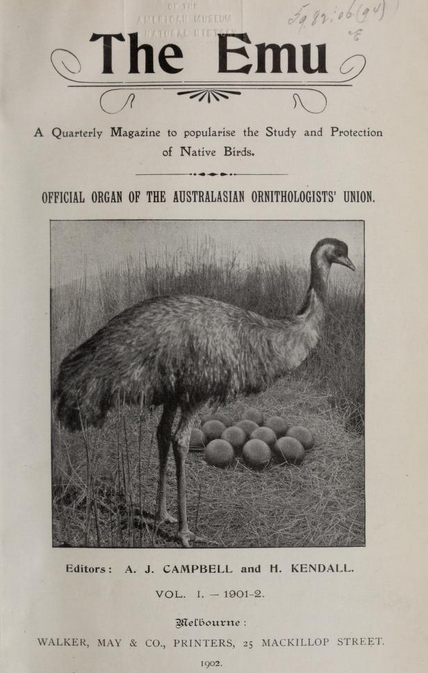

Amongst the Union’s collection is a wonderful series of hand coloured glass lantern slides of birds, including this Superb fairy-wren. Photographer Clarence Leslie Lang joined the union in 1925 and was actively involved as a bird lover and naturalist as he moved around the state.

Who remembers getting a Gould League certificate of the Bird Lovers Pledge? Formed in 1909 and named after John Gould, the League introduced the love of birds to generations of school children, and over the years has extended their involvement into more general environmental and sustainability issues, educating and inspiring through their publications, as habitat loss threatens both individual species and ecosystems.
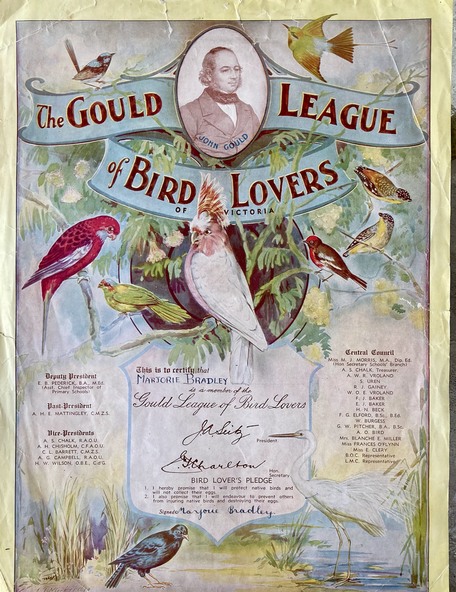
Part of the Victor Cobb Collection donated to the Library, this small notebook includes 12 small drawings – only 7 x 11cm. Cobb was an accomplished artist, chiefly working in etchings – we don’t know if this beautiful album was painted by him.
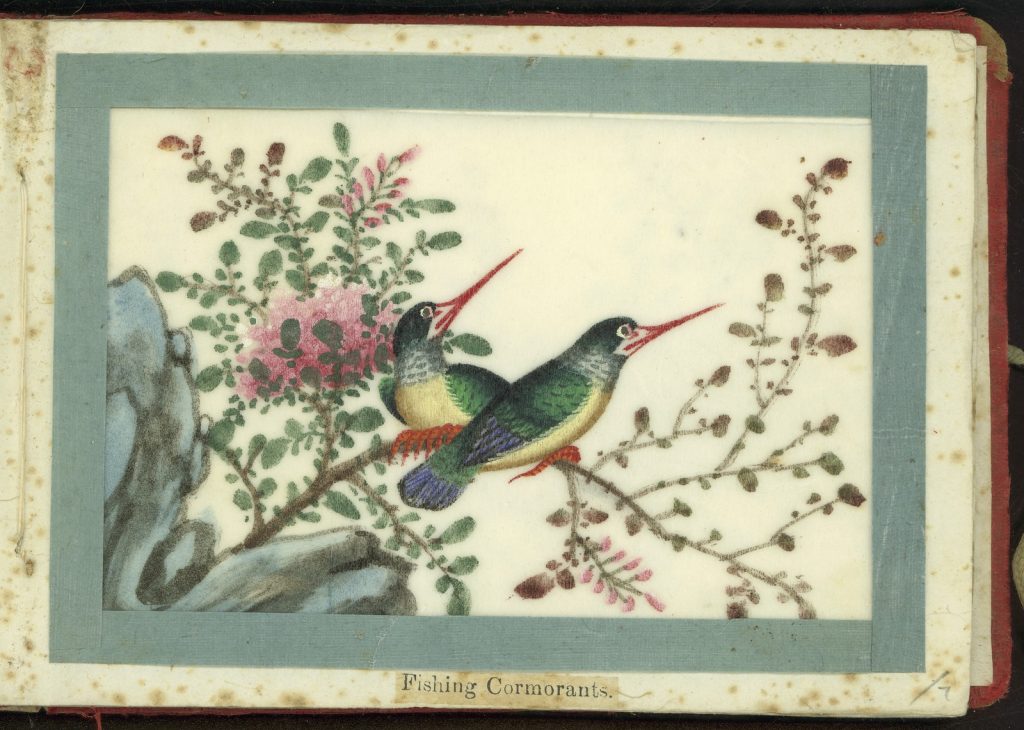
This work is attributed to Robert Russell, early surveyor in Port Phillip. Painted on an opaline glass panel, this depiction, of a busy group of Eurasian blue tits, perched in a rose bush, captures the social habits of small birds – we can almost hear them chattering.
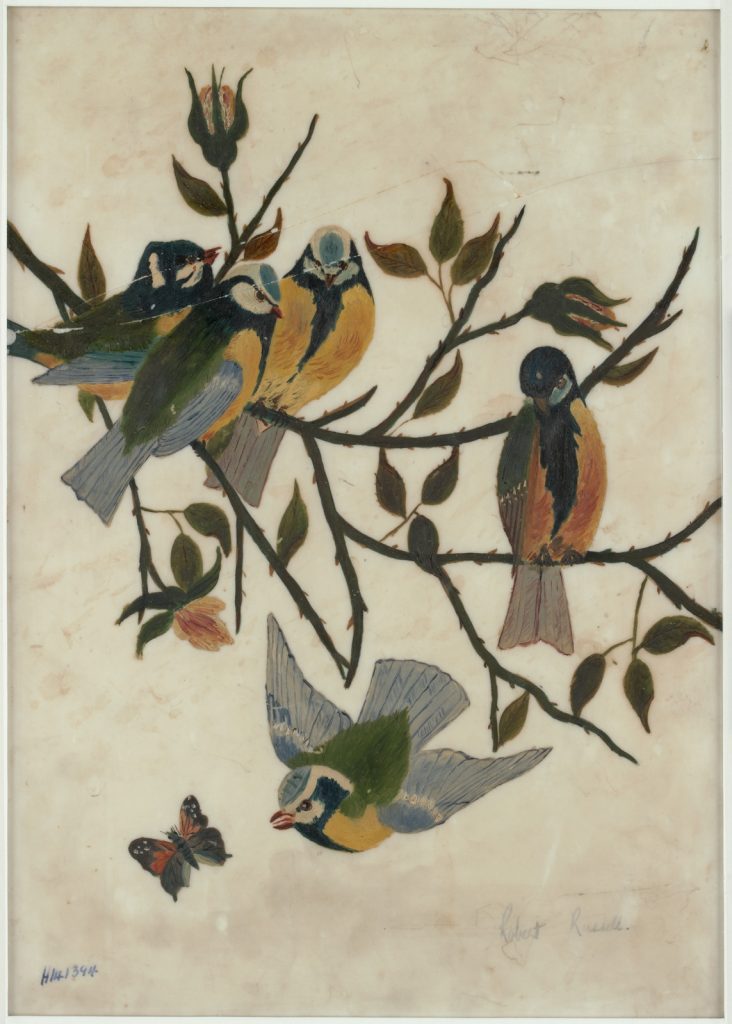
Russell, Robert, [Birds and butterflies on a branch], painting,
[between 1840 and 1890?], H141394
These postcards are part of a series painted by Neville Henry Cayley. His son, Neville William Cayley, also specialised in birds and his book, What bird is that: a guide to birds in Australia, first published in 1931, included his illustrations. It became Australia’s most popular bird book, and is still in print.


Our collection of photographs and books by Cyril Grant Lane include this one of a beady eyed Kookaburra. Lane, a member of the British Empire Naturalists’ Association, spent nearly 30 years travelling in Australia. Several in this collection are actually of stuffed birds – their slightly skewed feet a clue to their state. These photographs appear in his Creature life in Australian wilds, and his illustrated articles also appeared in the Melbourne press.
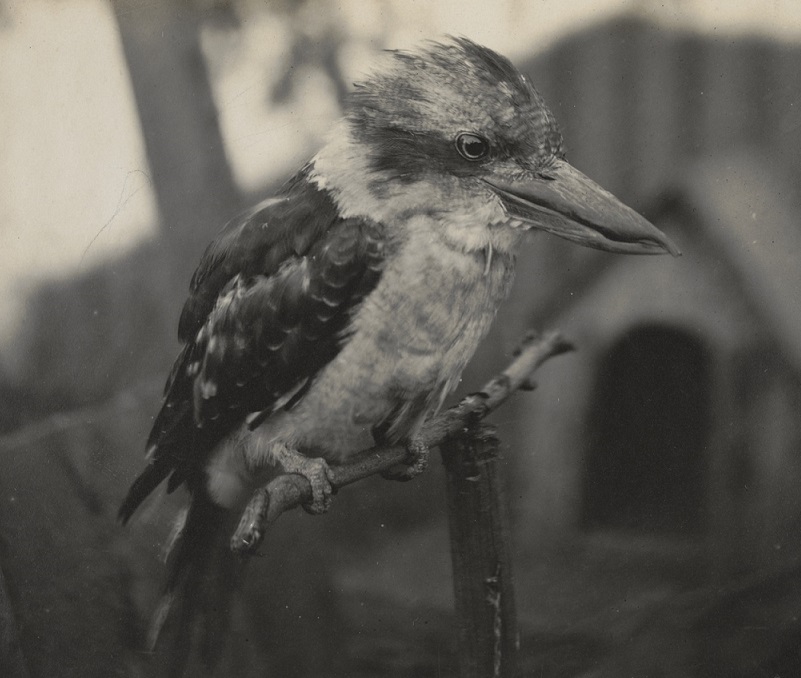
Advertising cards found the natural world a ready source of material – many included some species information on the verso – this Whitethroat, is perched in a blossoming tree above her nest of pale blue eggs. In 1828 Van Houten’s developed a process for removing the cocoa fats, to create a lighter and more dissolvable powder, with added health benefits!
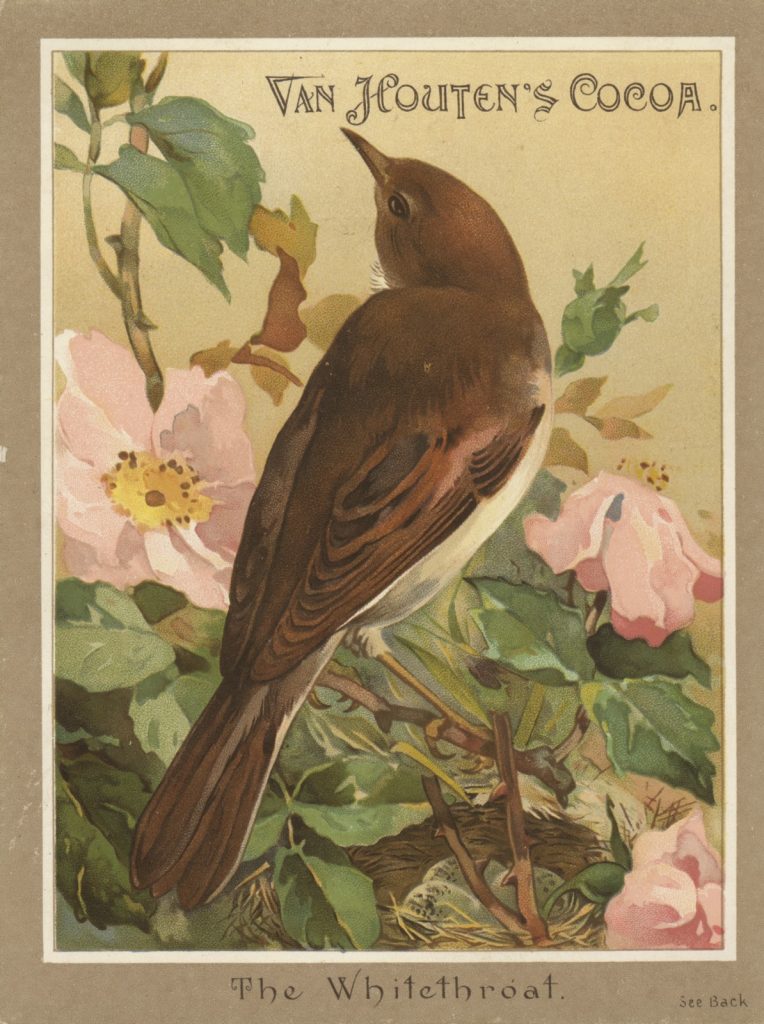

Magpies are much loved birds – both for their glorious warbling song and the connection they appear to make with humans and animals. Ting a ling the magpie spent enough time with the household to be named and also feel comfortable with Jenny the dog – and vice versa! The magpie on the right is perhaps collecting the falling hair for incorporation in a nest.
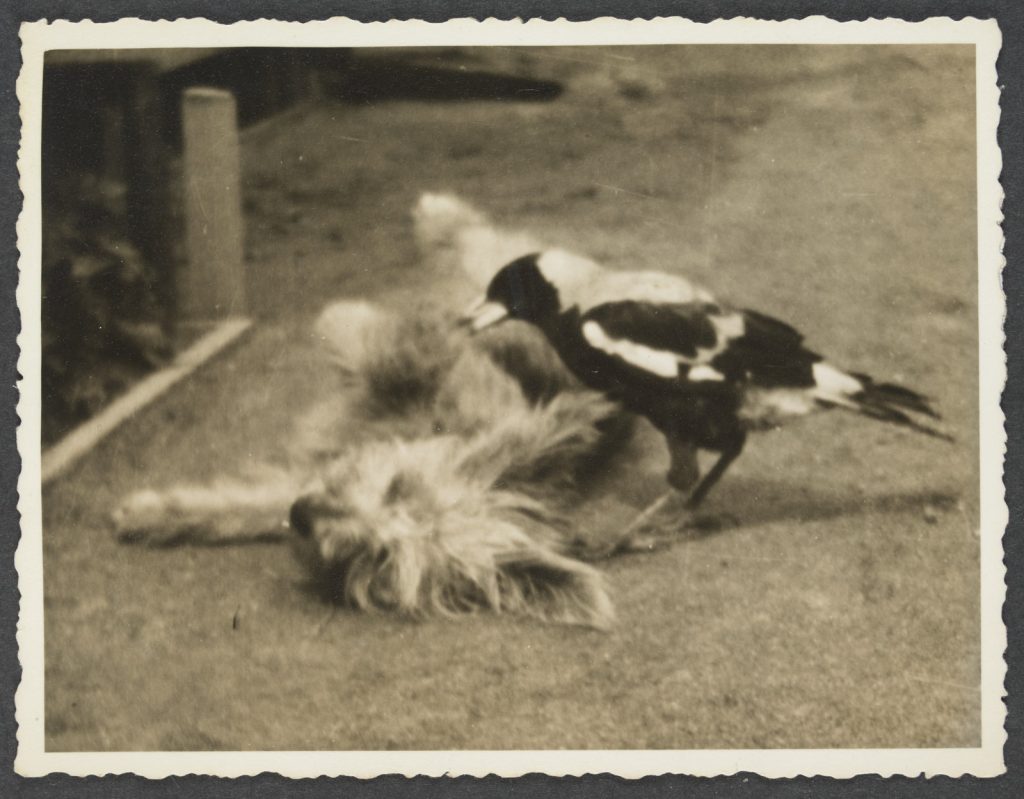
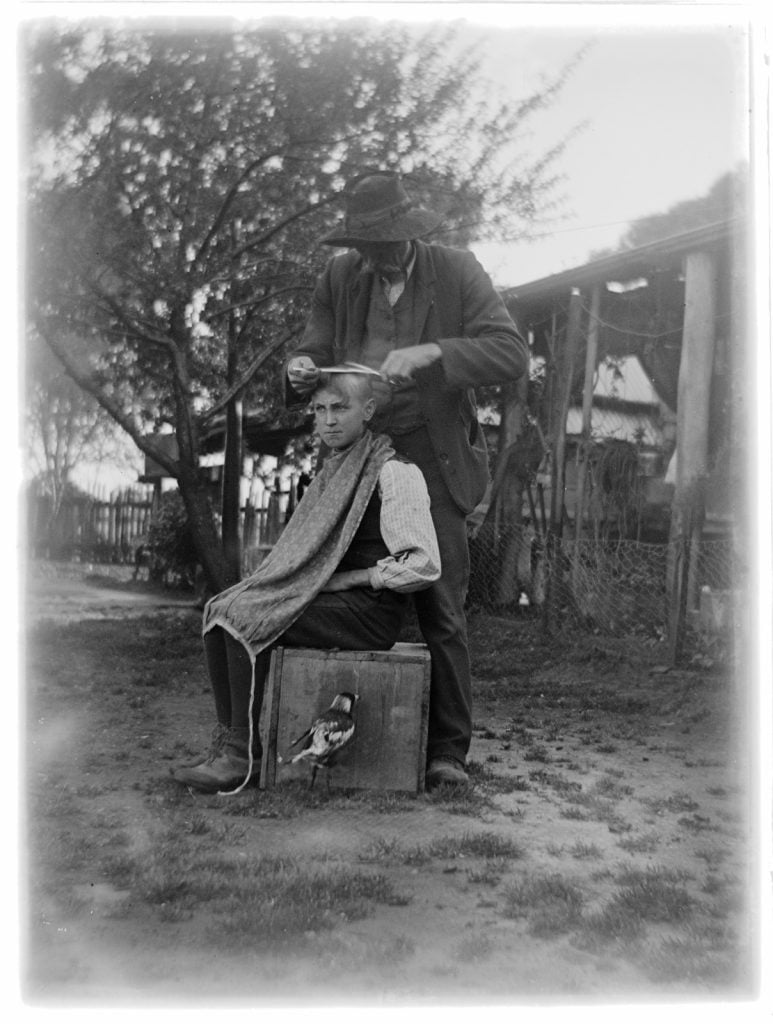
Godden, Harold Leopold, [Boy sitting on a box in a yard having his hair cut by a man standing behind him, a magpie pecking at the box], photograph, [1907-1914], H2012.88/106
And a note to finish – this poster by Chris Reidy, captures some of the powerful otherworldly qualities of majestic birds in flight, and the places that birds may take us.
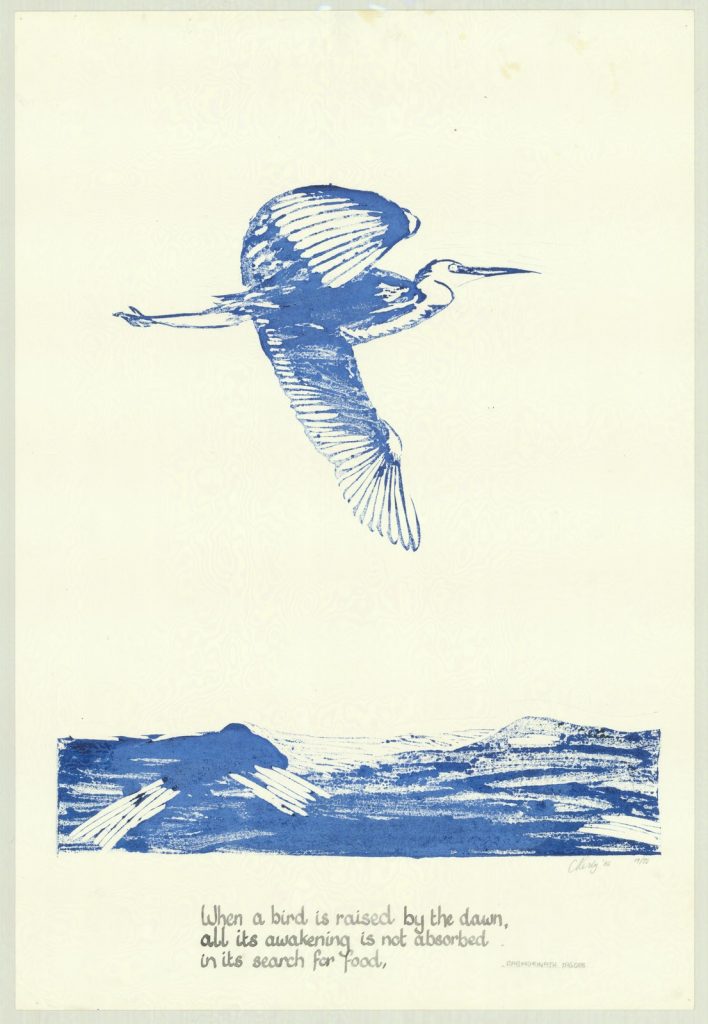
This work is in copyright. Reproduced with permission of the artist.
More to explore
Birdlife Australia
Dolby, Tim, 2009, Where to See Birds in Victoria, Sydney, Allen and Unwin. ebook, available from home with State Library membership.
Gould, Elizabeth and John, 1837-1838, Birds of Australia and adjacent islands, published by the author, London
Gould, John, illustrators Elizabeth Gould, Henry Constantine Richter, and others, 1848, The birds of Australia in 7 volumes, published by the author, London
John Lewin, Australia’s first free professional artist, webinar, State Library News South Wales
Mathews, Gregory M, 1910-1927, Birds of Australia, London, Wetherby
Pizzey, Graeme, 2003, The field guide to the birds of Australia, Pymble, Harper Collins
Birds nests


This is beautiful and informative. Thanks, SLV and Jane Miller.
Hello John – thank you for your interest, and reading – and I’m glad that you enjoyed the post – there are wonderful things in our collection, and it is good to be able to link out to digitised copies of those early publications as well.